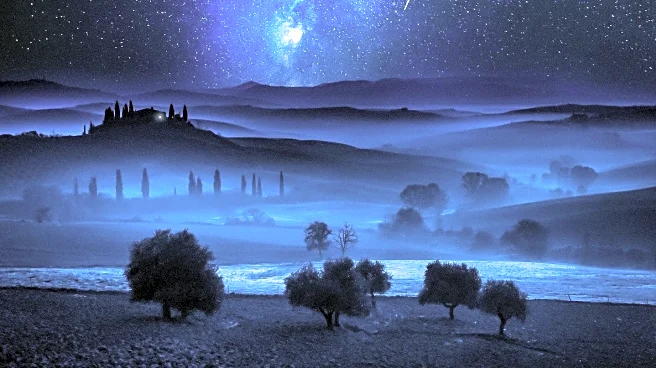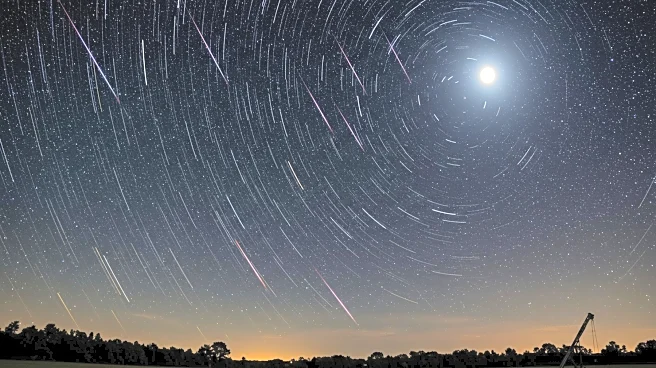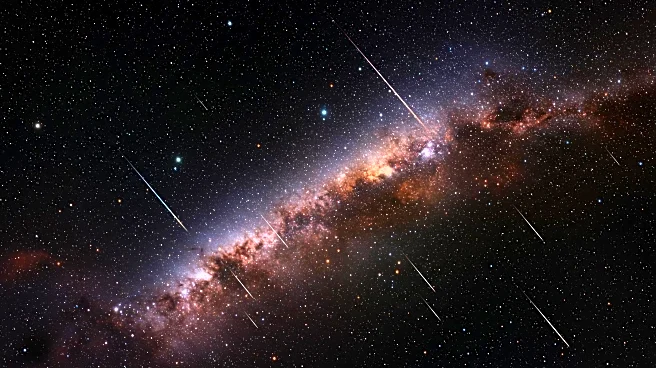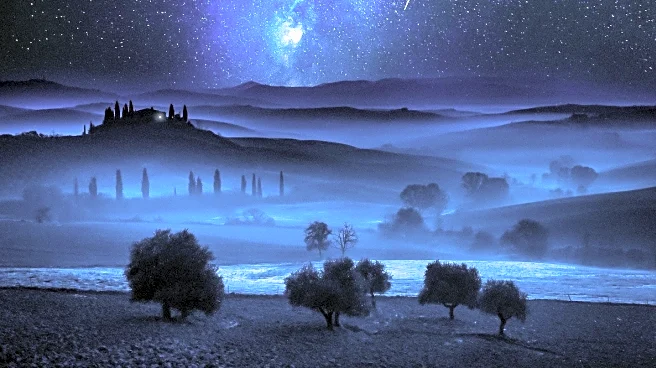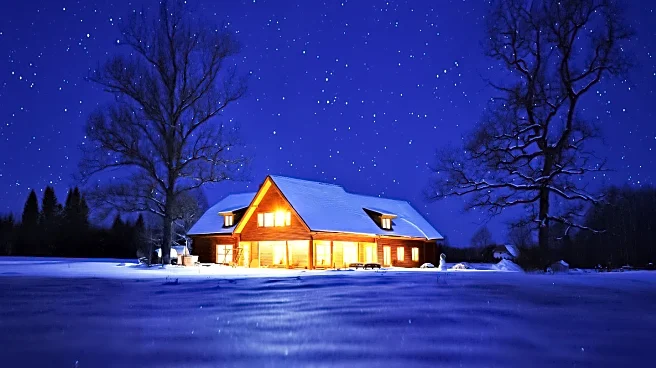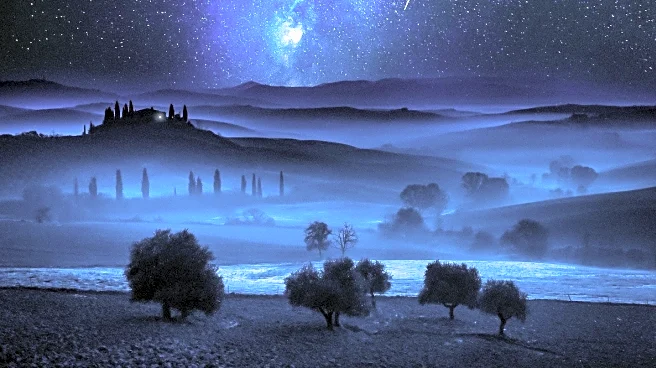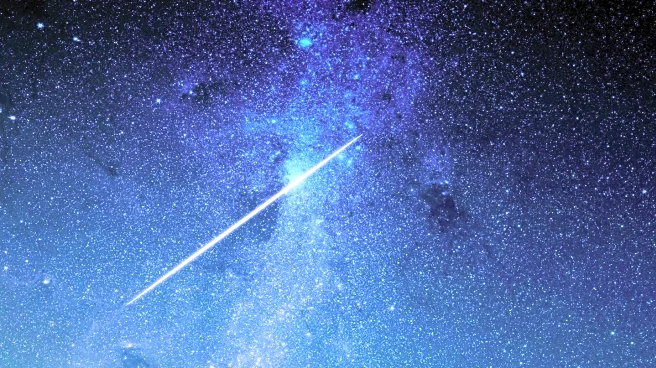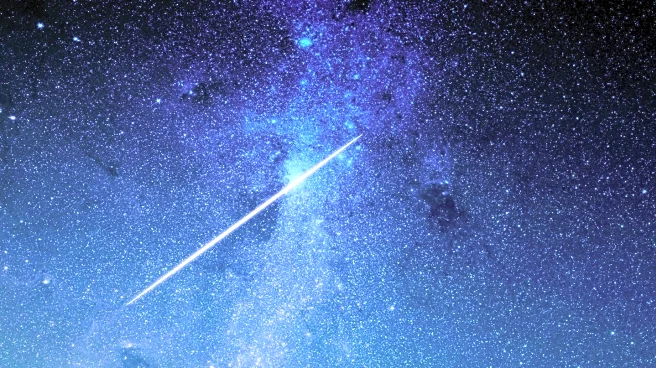What's Happening?
The Perseid meteor shower reached its peak on August 12-13, 2025, offering a spectacular display of shooting stars that captivated stargazers worldwide. Despite the interference of a waxing gibbous moon, which brightened the night sky and obscured some meteors, the event was still a visual treat. The Perseids are an annual occurrence, active every July and August, as Earth passes through the debris trail of comet 109P/Swift-Tuttle. This year, the shower coincided with the moon's brightness, affecting visibility but still allowing for numerous bright meteors to be seen. Photographers captured stunning images of the meteors against various backdrops, including auroras and iconic landscapes.
Why It's Important?
The Perseid meteor shower is one of the most anticipated astronomical events, drawing attention from both amateur and professional astronomers. It provides an opportunity for the public to engage with astronomy and appreciate the natural phenomena visible from Earth. The event also highlights the importance of preserving dark skies, as light pollution can significantly impact the visibility of such celestial events. The Perseids serve as a reminder of the vastness of space and the ongoing interactions between Earth and cosmic debris, fostering interest in space exploration and science.
What's Next?
The Perseid meteor shower will continue to be visible until early September, although the peak has passed. Stargazers are encouraged to find locations with minimal light pollution to maximize their viewing experience. As the moon wanes, visibility of the meteors may improve, offering more opportunities for observation. The astronomical community will continue to monitor and capture images of the shower, contributing to ongoing research and public engagement in astronomy.
Beyond the Headlines
The Perseid meteor shower also raises awareness about the impact of light pollution on astronomical observations. Efforts to reduce artificial lighting in urban areas can enhance the visibility of such events, promoting environmental conservation and appreciation of natural phenomena. Additionally, the shower's occurrence during a geomagnetic storm last year, which sparked auroras, highlights the interconnectedness of various atmospheric and cosmic events.
